
|
September 2024 Newsletter
|
Transitions and Reporting Worth Celebrating!
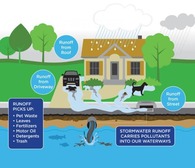
The Sustainability Division is already missing Sustainability Specialist, Michael Carr, who transitioned to Public Works last month. Yet, we are very grateful for all of his contributions and proud of his move upward and onward! Sustainability will continue working closely with Public Works on mutually concerning projects. On August 12th, Michael was promoted to the role of Environmental Compliance Officer for Santa Fe County in the Public Works Department, which is a much-needed role for the entire County. This newly created position will be responsible for leading the County’s Domestic Well Monitoring Program, managing compliance with the EPA MS4 permit, and tackling regulation compliance permitting and reporting across the County.
A priority task is ensuring progress on the recently passed Stormwater Management Program Plan. This includes developing a central stormwater webpage, illicit discharge reporting form, and promoting the use of green stormwater infrastructure (GSI) throughout the County. We are excited to see Michael's experience in the Sustainability Division influence the management of projects with Public Works.
Speaking of MS4, this is a reminder to Santa Fe County Constituents, the latest MS4 Annual Report is available for public comment here:
Draft FY24 MS4 Annual Report
Santa Fe County invites members of the public to review and comment on the draft FY24 annual report for managing municipal stormwater pollution. This report, which is to be submitted to the United States Environmental Protection Agency (EPA) outlines the County's efforts in 2023-2024 to reduce stormwater pollution under the National Pollutant Discharge Elimination System (NPDES) permit NMR040000. Your input will help us ensure compliance and protect our water resources.
A copy of the draft report is available for public review on the Conserve Water Sustainability Webpage. Members of the public may also request a physical copy at the customer service entry kiosk of the Santa Fe County Administrative Complex at 240 Grant Avenue, Santa Fe, NM 87501. Please provide any comments on the draft annual report in writing by 5:00 PM on September 20th to: the Santa Fe County Sustainability Office, 240 Grant Avenue, Santa Fe NM 87501 or via e-mail at sustainability@santafecountynm.gov.
|
Plant of the Month: Coyote Willow (Salix exigua)
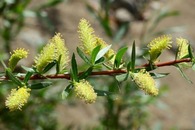
One of the great things about this Southwest Native shrub is its resiliency! In addition to the Southwest, Coyote Willow grows throughout California, north to Alaska, east across North America, and south to Arizona and Mexico. Salix exigua can stand high winds, high velocity floodwaters, heavy precipitation, and sediment deposition. Poles of willow readily regenerate, and mature Coyote Willow patches help to stabilize stream banks, maintain channel morphology, offer water quality improvement, ground-water recharge, flood abatement and provide habitat for wildlife and fish.
Salix exiqua helps to provide a structurally complex riparian vegetation community, and this in turn provides many different habitats that support a diverse array of species. Different groups of animals occupy or use the many layers of vegetation, and this multistory arrangement is often present nowhere else in arid landscapes. Salt Cedar and Russian Olive can crowd out Coyote Willow quickly, if those invasive species are not managed in a riparian area. There are certainly times when Coyote Willow causes frustration and damage to human infrastructure systems; their presence has sometimes contributed to road flooding and clogged acequias, therefore management of their growth is required in developed areas. Rabbits, deer, moose, and elk, browse on Coyote Willow twigs, foliage, and bark. Beavers consume willow branches. In 1998, the Las Lunas Plant Materials Center reported that beaver browsed more than 5,000 coyote willow cuttings to ground level, and all the willow re-sprouted. Several species of birds eat willow buds and young twigs.
Also known as, Sandbar willow, gray willow, narrow-leaved willow, dusky willow, and pussy willow, Salix exiqua, with its long, thin leaves, is the most distinctive of the willow species. Because Coyote Willow is so easy to propagate with cuttings, it is commonly used by natural resource managers engaged in riparian restoration projects. Current best practices in low-tech, process-based, restoration suggest planting cuttings using the pole planting process, an indigenous land- management method, practiced for thousands of years!
|
What Can I Do?
Hot Water, Cool Savings – Is a Heat Pump Water Heater Right for Me?
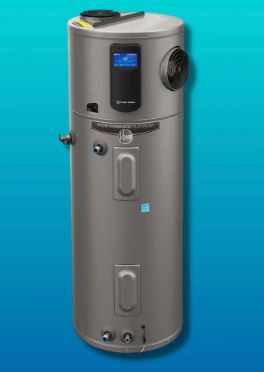
Tucked away in a closet or garage, water heaters may not be the most prominent appliances in one’s home, however, they are one of the most essential. For most households, heating water is the second largest user of energy, on average accounting for 14% to 18% of utility costs.[1] If your water heater needs replacement, opting for a heat pump water heater is a simple way to reduce energy use, take a first step towards electrifying your home and most importantly, save money.
If you’ve ever waited for a pot of water to boil you will know that heating water is an energy intensive process. Unlike traditional electric and natural gas water heaters which heat water directly, heat pump water heaters operate like a refrigerator in reverse, taking heat from the outside environment and transferring heat through a compressed refrigerant to water in a tank.
While heat pump water heaters take longer to heat water, they do so with significantly increased efficiency. The energy efficiency of water heaters is typically measured using the Uniform Energy Factor (UEF) which is the ratio of energy output (energy in the form of hot water) to energy input (electricity or natural gas used to heat the water.) Natural gas and electric water heaters on average have a UEF between 0.63 and 0.95 meaning that 63% to 95% of the energy used is conserved in the form of hot water and 37% to 5% of energy is lost. Heat pump water heaters on the other hand have a UEF between 3.3 and 4.1 meaning that they are able to convert (moving heat from the outside environment) 3 to 4 units of heat energy into hot water for each unit electrical energy that is consumed.[2]
This efficiency can result in significant cost savings over traditional electric and natural gas heaters. On average, a typical household can expect to save between $80 and $230 per year by switching to a heat pump water heater with the greatest savings available for those who switch from a traditional electric water heater. Currently, heat pump water heaters cost more than their electric or natural gas counterparts however heat pump water heaters qualify for federal tax rebates of up to 30% of the cost of the system. The average heat pump water heater will cost between $1,050 and $2,100 with a 30% rebate while electric and gas water heaters cost between $450 and $1,500.[3] Under ideal circumstances a heat pump water heater will pay for itself in as little as 3 years and only in instances where a household is switching from natural gas and purchasing a top end heat pump water heater will the system fail to pay for itself within its lifetime.
Yet, the resulting reduced GHG emissions from transitioning to a heat pump water heater provide plenty of benefits overall for air quality and climate change. If gas prices continue to rise as anticipated, these factors also change the ROI formula considerably.
Even better, households making less than 80% of the Santa Fe Area Median Income ($51,250 for a family of one, $73,200 for a family of four) will soon be able to take advantage of the New Mexico Energy, Minerals and Natural Resource Department Home Electrification and Appliance Rebate Program (HEAR). If qualified, households can receive a heat pump water heater rebate of up to $1,750 potentially fully offsetting the cost of a new system.
There are additional considerations including water heating sizing, electrical requirements and considerations of where to locate the system which will be discussed in a future newsletter article. In the meantime, consider if a heat pump water heater makes sense for your home and your budget.
|
Other Highlights
(click the banners below for more information)


|
Our September Picks
(Click on the blue titles for more information)
|

Sept 7, 6:00 p.m.
Fundraiser for the Santa Fe Conservation Trust
with special guest Bill McKibben
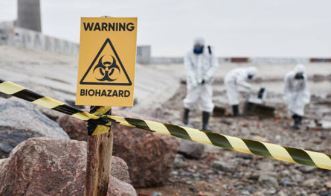
Ongoing
Climate change has wide-ranging impacts on society, including our health. The Climate Change ECHO program provides health care and public health professionals with the essential skills to care for patients in the context of climate change.
|
|

Sept 18
Third Act New Mexico is a diverse group of elders working for progressive change to save our planet and protect our democracy. We need your experience, energy, and determination.
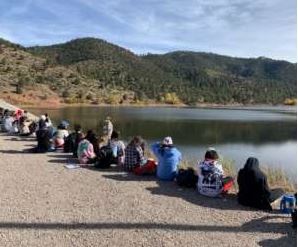
Ongoing
The Santa Fe Watershed Association’s education programs provide opportunities for Santa Feans to experience the Santa Fe River and its watershed through both school and public programs.
|
|

Sept 5
To learn more about the workshop, including a detailed agenda, visit here. There are 30 limited scholarship opportunities available. Ideal candidates will be individuals who have an idea for a small food business or have an existing small food business. Scholarship applications are accepted through the Making a Living on 5 Acres or Less website.

Sept 21, 9-12:00 p.m.
These events are a great way to give back to your community and make a visible difference in the appearance of our city!
|
|
|
|
|
|
|
Sharing
Share this issue with others! 
Sustainability Questions?
We are your local advisors on all thing's sustainability in Santa Fe County. Contact us with questions or to suggest topics for future newsletters!
Jacqueline Beam, jybeam@santafecountynm.gov
Will Donahoo, wdonahoo@santafecountynm.gov
Nav Khalsa, nkhalsa@santafecountynm.gov
Click to visit the Sustainability webpage
|
|